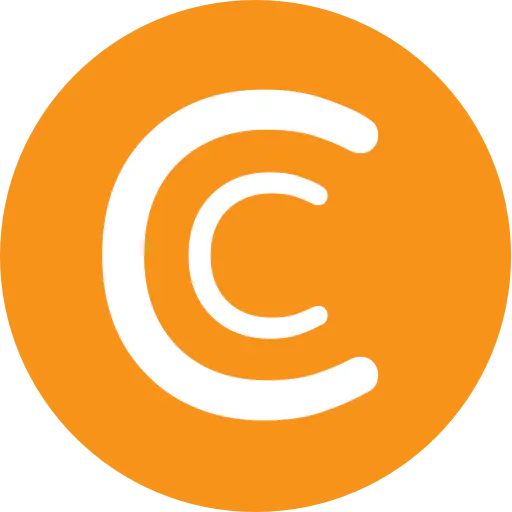Table of Contents:
Introduction
In the ever-evolving world of cryptocurrencies, USDT (Tether) has emerged as a significant player. This stablecoin is designed to maintain a 1:1 value with traditional fiat currencies like the US Dollar. For those new to the cryptocurrency and blockchain space, understanding USDT is crucial. This guide will provide a comprehensive overview of USDT, its workings, and its role within the blockchain ecosystem. By the end of this article, you will have a clear understanding of why USDT is essential and how it can be used effectively.
What is USDT?
USDT, also known as Tether, is a type of cryptocurrency known as a stablecoin. Unlike other cryptocurrencies like Bitcoin or Ethereum, which can have volatile price swings, USDT is designed to maintain a stable value. Each USDT token is pegged to a traditional fiat currency, such as the US Dollar, on a 1:1 basis. This means that 1 USDT is intended to always be worth 1 US Dollar.
The Best Mining Providers at a Glance
» Infinity HashFrom our perspective, currently the best mining provider on the market. With the community concept, you participate in a mining pool completely managed by professionals. A portion of the earnings are used for expansion and maintenance. We've never seen this solved as cleanly anywhere else.
» Hashing24A well-known and established cloud hosting company. With a good entry point and in a good market phase, a good ROI can also be generated with some patience. Unfortunately, we see the durations as a major drawback.
The primary purpose of USDT is to provide a stable digital asset that can be used for transactions, trading, and as a store of value without the risk of significant price fluctuations. This stability is achieved through a mechanism where Tether Limited, the company behind USDT, holds reserves of fiat currency equivalent to the amount of USDT in circulation.
USDT operates on multiple blockchain networks, including Bitcoin (via the Omni Layer protocol) and Ethereum (as an ERC-20 token). This multi-network support allows for greater flexibility and interoperability within the cryptocurrency ecosystem.
History and Founders of USDT
The history of USDT dates back to July 2014 when it was initially launched under the name "Realcoin." The founders of USDT are Brock Pierce, Craig Sellars, and Reeve Collins. Their primary goal was to create a cryptocurrency that could solve the issues of high volatility and the difficulty of converting between fiat currencies and cryptocurrencies.
In November 2014, Realcoin was rebranded to Tether (USDT). The rebranding aimed to better reflect the coin's purpose of "tethering" the value of cryptocurrencies to stable fiat currencies. The founders envisioned a digital asset that could combine the benefits of blockchain technology with the stability of traditional currencies.
Since its inception, USDT has grown to become one of the most widely used stablecoins in the cryptocurrency market. It has played a crucial role in providing liquidity and stability, making it easier for users to trade and transact within the blockchain ecosystem.
How Does USDT Work?
Understanding how USDT works is essential for grasping its role in the blockchain ecosystem. USDT operates on a simple yet effective mechanism to maintain its stable value.
Here’s a step-by-step breakdown of how USDT functions:
- Issuance: Tether Limited issues new USDT tokens. For every USDT token created, an equivalent amount of fiat currency (e.g., US Dollar) is deposited into Tether's reserves.
- Blockchain Integration: These USDT tokens are then integrated into various blockchain networks, such as Bitcoin (via the Omni Layer protocol) and Ethereum (as ERC-20 tokens). This allows USDT to be used across different platforms and applications.
- Transactions: Users can transfer USDT tokens between wallets just like any other cryptocurrency. The key difference is that the value of USDT remains stable, making it a reliable medium of exchange.
- Redemption: When users want to convert their USDT back into fiat currency, they can redeem their tokens through Tether Limited. The company then removes the equivalent amount of USDT from circulation and releases the corresponding fiat currency to the user.
This mechanism ensures that the value of USDT remains pegged to the fiat currency it represents. Regular audits and transparency reports are conducted to verify that Tether's reserves match the amount of USDT in circulation, providing users with confidence in the stability and reliability of the token.
The Role of USDT in the Blockchain Ecosystem
USDT plays a pivotal role in the blockchain ecosystem, offering stability and reliability in a market known for its volatility. Here are some key roles that USDT fulfills:
- Liquidity Provider: USDT is widely used on cryptocurrency exchanges to provide liquidity. Traders can quickly move in and out of positions without worrying about price fluctuations, making it easier to execute trades efficiently.
- Stable Medium of Exchange: Due to its stable value, USDT is often used as a medium of exchange for buying and selling goods and services. This stability makes it a preferred choice for merchants and consumers alike.
- Hedging Tool: Investors use USDT to hedge against the volatility of other cryptocurrencies. By converting their assets into USDT during market downturns, they can protect their portfolio's value.
- Cross-Border Transactions: USDT facilitates cross-border transactions by providing a stable and fast way to transfer value. This is particularly useful in regions with unstable local currencies or limited access to traditional banking services.
- DeFi Integration: USDT is extensively used in decentralized finance (DeFi) applications. It serves as collateral for loans, a stable asset for yield farming, and a reliable unit of account for various DeFi protocols.
By fulfilling these roles, USDT enhances the functionality and efficiency of the blockchain ecosystem. It bridges the gap between traditional finance and the digital world, making it easier for users to navigate the complexities of the cryptocurrency market.
Benefits of Using USDT
Using USDT offers several benefits, making it a popular choice among cryptocurrency users. Here are some of the key advantages:
- Stability: One of the primary benefits of USDT is its stable value. Unlike other cryptocurrencies that can experience significant price swings, USDT maintains a 1:1 peg with fiat currencies like the US Dollar. This stability makes it a reliable option for transactions and savings.
- Liquidity: USDT is one of the most liquid stablecoins available. It is widely accepted on numerous cryptocurrency exchanges, allowing users to quickly and easily convert it into other cryptocurrencies or fiat currencies.
- Speed and Low Fees: Transactions involving USDT are typically faster and cheaper compared to traditional banking systems. This is especially beneficial for cross-border transactions, where traditional methods can be slow and expensive.
- Accessibility: USDT can be used by anyone with an internet connection and a digital wallet. This accessibility makes it a valuable tool for people in regions with limited access to traditional banking services.
- Integration with DeFi: USDT is extensively used in decentralized finance (DeFi) applications. It serves as a stable asset for lending, borrowing, and earning interest, providing users with various opportunities to grow their digital assets.
- Transparency: Tether Limited conducts regular audits and publishes transparency reports to verify that its reserves match the amount of USDT in circulation. This transparency provides users with confidence in the stability and reliability of USDT.
These benefits make USDT a versatile and valuable asset within the cryptocurrency ecosystem. Whether you're a trader, investor, or everyday user, USDT offers a range of advantages that can enhance your experience in the digital currency world.
USDT on Different Blockchain Networks
USDT is unique in that it operates on multiple blockchain networks, enhancing its versatility and accessibility. Here’s a closer look at how USDT functions on different blockchain platforms:
- Bitcoin (Omni Layer): Originally, USDT was issued on the Bitcoin blockchain using the Omni Layer protocol. This protocol allows for the creation and transfer of digital assets on top of the Bitcoin blockchain. USDT transactions on Omni Layer benefit from Bitcoin's robust security and widespread adoption.
- Ethereum (ERC-20): USDT is also available as an ERC-20 token on the Ethereum blockchain. This version of USDT leverages Ethereum's smart contract capabilities, enabling seamless integration with decentralized applications (dApps) and DeFi platforms. The ERC-20 standard ensures compatibility with a wide range of Ethereum-based services and wallets.
- TRON (TRC-20): To address scalability and transaction speed issues, USDT is issued on the TRON blockchain as a TRC-20 token. TRON's high throughput and low transaction fees make it an attractive option for users who require fast and cost-effective transfers.
- Other Networks: USDT is also available on other blockchain networks such as EOS, Algorand, and Solana. Each of these networks offers unique features and benefits, allowing users to choose the platform that best suits their needs.
The multi-network support of USDT ensures that it can be used across various platforms and applications, providing users with greater flexibility and interoperability. Whether you prefer the security of Bitcoin, the smart contract capabilities of Ethereum, or the speed of TRON, USDT is available to meet your needs.
Proof-of-Reserves and Backing of USDT
The concept of proof-of-reserves is crucial for maintaining trust in USDT. Tether Limited, the company behind USDT, ensures that each token is backed by an equivalent amount of fiat currency or other assets. This mechanism provides the stability that USDT is known for.
Here’s how the proof-of-reserves and backing of USDT work:
- Reserves: Tether Limited holds reserves in various forms, including cash, cash equivalents, and other assets. These reserves are meant to match the total amount of USDT in circulation, ensuring that each token is backed 1:1 by real-world assets.
- Regular Audits: To maintain transparency, Tether Limited undergoes regular audits by third-party firms. These audits verify that the reserves are sufficient to cover the amount of USDT issued. The results of these audits are published in transparency reports, providing users with confidence in the stability of USDT.
- Transparency Reports: Tether Limited publishes regular transparency reports that detail the composition of its reserves. These reports include information on the types of assets held and their respective values, ensuring that users can verify the backing of USDT.
- Redemption Mechanism: Users can redeem their USDT for fiat currency through Tether Limited. When a redemption occurs, the corresponding amount of USDT is removed from circulation, and the equivalent fiat currency is released to the user. This process helps maintain the 1:1 peg between USDT and the fiat currency it represents.
By implementing these measures, Tether Limited ensures that USDT remains a stable and reliable digital asset. The proof-of-reserves mechanism, combined with regular audits and transparency reports, provides users with the assurance that their USDT tokens are backed by real-world assets.
Common Uses of USDT
USDT is widely used in the cryptocurrency world due to its stability and versatility. Here are some common uses of USDT:
- Trading: USDT is frequently used as a trading pair on cryptocurrency exchanges. Traders use USDT to buy and sell other cryptocurrencies without worrying about price volatility. This makes it easier to manage trading strategies and minimize risks.
- Payments: Due to its stable value, USDT is an ideal choice for making payments. Merchants and consumers can use USDT to transact without the fear of value fluctuations, ensuring that the value of goods and services remains consistent.
- Remittances: USDT is a popular option for cross-border remittances. It allows users to send money quickly and cheaply across borders, bypassing traditional banking systems that can be slow and expensive.
- DeFi Applications: USDT is extensively used in decentralized finance (DeFi) platforms. It serves as collateral for loans, a stable asset for yield farming, and a reliable unit of account for various DeFi protocols. This makes it a crucial component of the DeFi ecosystem.
- Hedging: Investors use USDT to hedge against the volatility of other cryptocurrencies. By converting their assets into USDT during market downturns, they can protect their portfolio's value and reduce exposure to risk.
- Storing Value: USDT is also used as a store of value. Users can hold USDT to preserve their wealth in a stable digital asset, avoiding the volatility associated with other cryptocurrencies.
These common uses highlight the versatility and importance of USDT in the cryptocurrency ecosystem. Whether for trading, payments, remittances, or DeFi applications, USDT provides a stable and reliable option for users worldwide.
Risks and Considerations
While USDT offers many benefits, it is essential to be aware of the risks and considerations associated with its use. Here are some key points to keep in mind:
- Regulatory Risks: The regulatory environment for cryptocurrencies, including stablecoins like USDT, is still evolving. Changes in regulations could impact the issuance, trading, and use of USDT. Users should stay informed about regulatory developments in their jurisdiction.
- Centralization: Unlike decentralized cryptocurrencies, USDT is issued and managed by Tether Limited, a centralized entity. This centralization introduces counterparty risk, as users must trust that Tether Limited will maintain adequate reserves and operate transparently.
- Transparency Concerns: Although Tether Limited conducts regular audits and publishes transparency reports, some users remain skeptical about the accuracy and completeness of these reports. Ensuring that the reserves fully back the circulating USDT is crucial for maintaining trust.
- Market Risks: While USDT is designed to maintain a stable value, it is not immune to market risks. In extreme market conditions, the value of USDT could deviate from its 1:1 peg with fiat currencies. Users should be aware of this possibility and monitor market conditions closely.
- Redemption Risks: The ability to redeem USDT for fiat currency depends on Tether Limited's operations and liquidity. In times of high demand or operational issues, users may face delays or difficulties in redeeming their USDT for fiat currency.
- Legal Risks: Tether Limited has faced legal challenges and scrutiny from regulators. Ongoing or future legal issues could impact the stability and availability of USDT. Users should be aware of the legal landscape and potential implications for their holdings.
Understanding these risks and considerations is crucial for making informed decisions about using USDT. While it offers stability and versatility, users should remain vigilant and stay informed about potential challenges and developments in the cryptocurrency space.
Conclusion
In conclusion, USDT plays a vital role in the blockchain ecosystem by providing a stable and reliable digital asset. Its ability to maintain a 1:1 peg with fiat currencies makes it an essential tool for traders, investors, and everyday users. USDT's integration across multiple blockchain networks, such as Bitcoin, Ethereum, and TRON, enhances its versatility and accessibility.
While USDT offers numerous benefits, including stability, liquidity, and low transaction fees, it is essential to be aware of the associated risks. Regulatory changes, centralization, and market conditions can impact the stability and usability of USDT. Users should stay informed and exercise caution when using stablecoins.
Overall, USDT provides a bridge between traditional finance and the digital world, making it easier for users to navigate the complexities of the cryptocurrency market. By understanding its workings, benefits, and risks, users can make informed decisions and leverage USDT effectively within the blockchain ecosystem.
FAQ on USDT and Its Role in the Blockchain Ecosystem
What is USDT?
USDT, also known as Tether, is a type of cryptocurrency known as a stablecoin. It is designed to maintain a stable value by being pegged to traditional fiat currencies like the US Dollar on a 1:1 basis.
Who founded USDT and when?
USDT was founded in July 2014 by Brock Pierce, Craig Sellars, and Reeve Collins. It was initially launched under the name "Realcoin" and later rebranded to Tether in November 2014.
How does USDT maintain its stable value?
USDT maintains its stable value through a mechanism where Tether Limited holds reserves of fiat currency equivalent to the amount of USDT in circulation. Regular audits and transparency reports verify that these reserves match the issued USDT tokens.
On which blockchain networks does USDT operate?
USDT operates on multiple blockchain networks including Bitcoin (via the Omni Layer protocol), Ethereum (as ERC-20 tokens), TRON (as TRC-20 tokens), and also on platforms like EOS, Algorand, and Solana.
What are the main uses of USDT?
USDT is widely used for trading, making payments, cross-border remittances, decentralized finance (DeFi) applications, hedging against other cryptocurrencies' volatility, and as a stable store of value.










